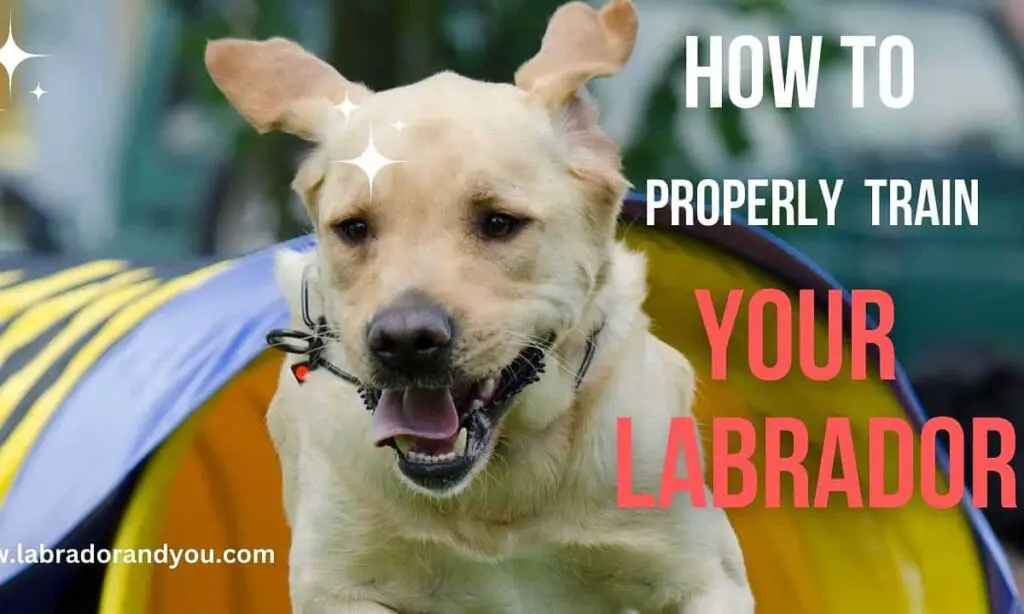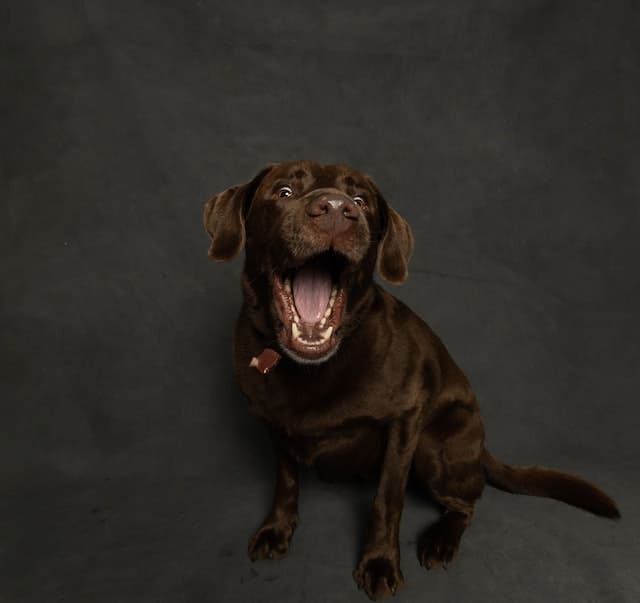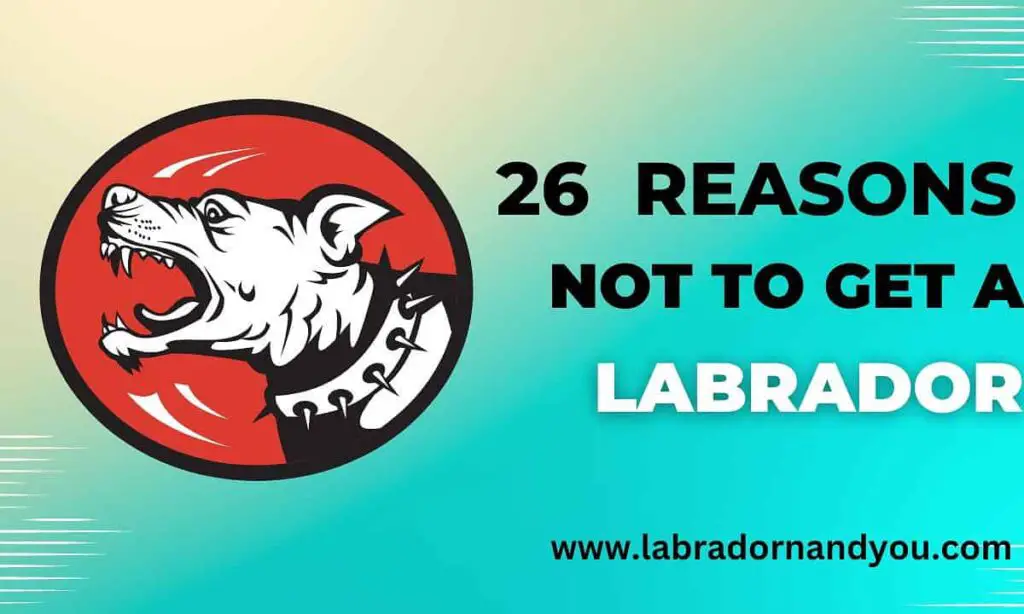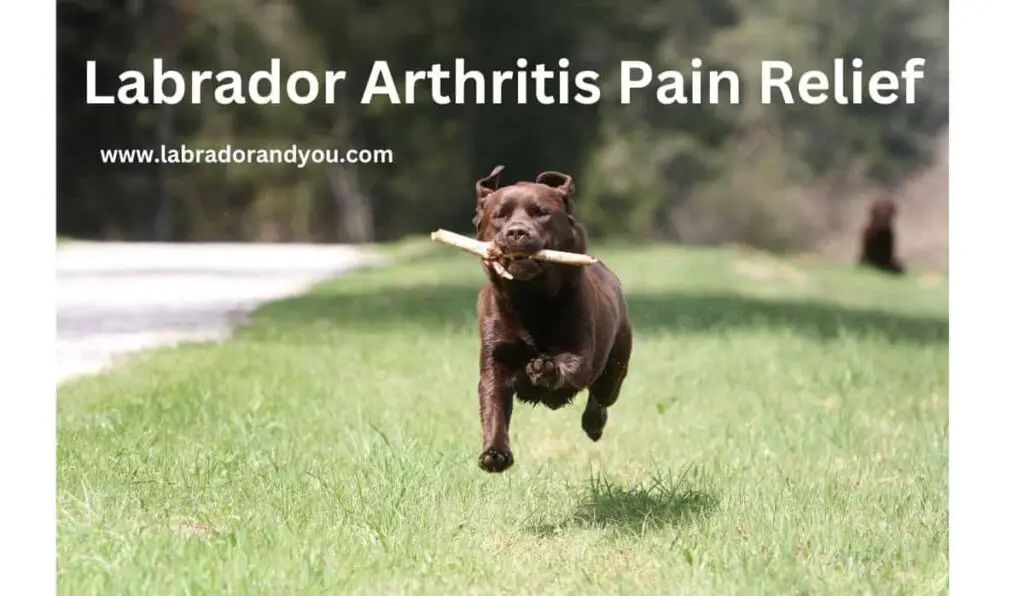With the summer approaching, is your dog already feeling the heat? Do you think Shaved labradors will be great as you fear heavy shedding? But it won’t reduce shedding. Nor will it keep your pup cool.
So, can you shave a lab? If not, why? And what are the alternatives? Let’s dive further into these shaved lab myths. Know how to minimize shedding and maintain your labrador retriever.
Should You Be Shaving Your Lab?
A labrador retriever has a natural and long dog’s coat. Shaved photos circulating the net are an outrage for pet owners. While it can be cute or funny, it must be avoided.
Some pet owners think labs enjoy the free-fur experience. Human hair and labrador fur are distinct and serve different purposes.
Also, fur follicles do not grow back correctly. Many lab owners fail to understand the concept of pet coats. Shaving labrador retrievers can change fur quality and cause discomfort, even skin cancer.
The True Purpose Of Labrador’s Coat
A labrador retriever is known for their thick double coat. Double coats have an inner and outer coat layer. Guard hairs or top guard coat is the outer layer having coarser and longer hair. They keep the debris, all the dirt, and sun rays distant from the undercoat.
The inner layer or undercoat has short and dense hair with a wooly texture. The undercoat produces all the hair shed by the labradors. Protection and body temperature regulation are a few labrador coat functions. Stripping the labrador’s coat will no longer offer these benefits.
The Secret Life Of Your Lab’s Coat
Many claim the fur grows back and is no big deal. So, can you shave your labrador? Is it a good idea? Have you considered the in-between fur can be irritant? Shaving a labrador’s double coat reverses the fur quality. They can no longer act as the natural barrier then.
Fur is a skin extension in animals and offers several advantages. It protects from external factors like weather and is your pet’s insulation system. Double coat benefits during seasonal changes too.
Why Labradors Shed?
Don’t confuse the labrador’s short hair with no shedding. Their fur blows out entirely twice yearly. Labs shed heavily. They shed most around June 21st and December 21st ( summer and winter solstices ).
The thick winter coat transfers into a light undercoat for the summer months. In the fall, they shed to produce warm winter coats. High amounts of fur are visible during this time.
The Double Coat Design
Labrador retrievers have a double layer of fur or hair. The top layer is rough, wiry, and abrasive. The underlayer is closer to the dog’s skin with fine and short hairs. A dog’s undercoat offers adequate summer and winter insulation. Shaving your labrador strips off the vital protective elements.
Essential natural oils move across the dog’s skin via the double coat. The erector pili, a muscle, attaches each hair follicle and provides a natural ventilation mechanism. Shaving the double coat risks breaking the erector pili and its important functions.
It removes their natural ability to keep cool and warm. Moreover, the follicle is also at risk of opening up. It also allows fungus or bacteria to seep inside the dog’s skin.
Reasons Why You Should Never Shave This Double-Coated Dog Breed
If you still haven’t got your answer on shaving, keep reading. Here are the top reasons why you should never shave a labrador.
The Texture Of The Regrown Labrador’s Coat Changes
A regrown coat will never be the same after shaving. The undercoat grows immediately after shaving, while the outer coat takes time. The undercoat grows at double the speed after shaving.
Labradors shed the undercoat naturally during summer to cope with the temperature. Shaving interferes, leading to coarse hair and unruly and thick regrown coats. It does not let air reach the skin, making the canine feel hotter. The regrown coat is also sticky and attracts dirt.
It Makes Your Dog’s Skin Feel Hotter
Do you think shaving will make your dog comfortable during summer? It is the reverse. Your labrador feels hotter due to the thick regrown coat. It is the prime reason to avoid shaving.
Causes Sunburn To Your Labrador
Dogs are more sensitive compared to humans when it comes to their skin. Guard hairs get removed while shaving. The same hairs guard the skin against the sunbeams. Hence shaving your lab risks not only sunburns but also skin cancer. Never remove the guard’s thick coat.
It Can Cause Horrible Skin Problems
Shaving your labrador invites allergies and skin issues. Some develop terrifying skin problems. Hot spots take much healing time. The labrador’s sensitive skin gets exposed on removal for protective fur.
It Causes More Allergies In You
Many individuals are allergic to dogs. It’s not the dense layer of fur but the pet dander that causes allergy. They are tiny skin flecks dogs shed. Shaving your lab brings you in direct contact with pet dander. It flies in the air more quickly, aggravating your allergy problems.
Shaving Your Labrador Disrupts Their Natural Insulation System
The top coat protects the inner coat, and the inner coat protects the skin. The muscles control hair follicles of distinct layers, moving them up and down.
These follicles pass air between the coats. Hence when you shave your lab, the natural cooling mechanism goes for a toss. The lab’s fur does not convey air effectively, leading to heavier breathing and a tired dog.
Shaved Labs Are More Difficult To Keep Clean
A labrador is an active breed likely to get dirty. The outer lab’s coat is water-repellant, removing dust, dirt, and moisture. The double coat works massively in the labrador’s grooming.
After shaving, there will be no protective layer. The dirt will reach the skin, making your pooch look messy. Carpet, bed, and sofa can all get spoiled. Bathing becomes more frequent. And too much bathing leads to itchy and flaky skin. Shaving makes cleaning a labrador more challenging.
Why Shaving Your Labrador To Reduce Shedding Won’t Work?
Shaving reduces shedding is a popular belief. Shedding is part of a labrador, who is a double-coated dog. Double-coat large breed dogs shed throughout the year and heavily during the season.
The shedding season witnesses maximum hair around the house. The season shedding is also called coat blow. The thick undercoat is shed in the spring to welcome the thinner one for the hot weather. Labrador owners must know shedding is a normal component of dog life. It helps them adapt to temperature fluctuations.
Shaved Labrador vs. Groomed Labrador
Many still ask me ” Can I shave my lab for shedding?” Well, heavy shedding is best dealt with by a regular grooming schedule. Brush a few times when they aren’t shedding much. It removes loose hairs and keeps the dog’s coat in shape.
De-shedding tools are needed during intense shedding periods. Large hair shed by the lab’s undercoat must be removed effectively to prevent mixing with the upper coat.
But be careful. These tools can also remove healthy hair, besides the dead prickly hairs. Sensitive dog skin invites irritation under pressure. A bath after brushing removes dead hair.
Alternatives To Shaving A Labrador
Shaving is not the best measure to handle the owlab’s coat issues. Here are some alternatives for your labrador outer coat upkeep.
Regular frequent grooming
Routine grooming is the top alternative for shaving to reduce shedding. Having a labrador retriever’s hair all around the house is irritating.
Excess shedding can be reduced with regular brushing and scheduled grooming. The right tools and proper grooming will fetch tremendous results.
Keep a slicker brush and an undercoat rake handy. Brush frequently and trim their nails monthly.
Cool Alternatives for your Lab
Is your labrador feeling too hot in the summer? Whatever you do, know that shaving is not the answer. A clean water bowl is sufficient. Hydration cools the dog’s body temperature naturally. Ensure your labrador rests under a shade and stays indoors during peak hours.
Keep dogs from exercising under the scorching summer heat. Change their play and exercise timing per the temperature.
For other skin issues and parasites
Fleas and lab’s skin issues are not cured by shaving. Proper treatment is of the hour. It would help if you did not shave labradors until a medical reason arises. Even if there is a medical requirement, consult your vet first. Check for alternatives if available.
Common Myths That Lead Owners to Shave Their Labradors
Not all groomers advise lab owners about shaving risks. Here are some reasons why shaving should not be made a regular maintenance routine.
- The first misconception is shaving keeps your labrador cool in summer. It’s false. The double coat offers insulation and keeps the dog cool in summer and warm in cold temperatures. Shaving will unbalance its natural cooling and heating functions.
- Another myth is shaving minimizes labrador shedding. Routine grooming and vacuuming are best. Add nutrients to your dog’s food for healthy double-coated dogs.
Many consider a black-shaved lab right. Be it a shaved black lab, shaved chocolate labrador, or shaved yellow lab, the problem is the same. Dismiss plans to shave your lab. And if you’ve already shaved, stop now.
Grooming Tips for Labradors
How do you ensure grooming is done correctly? Here’s how
- Regular grooming must be a part of your labrador’s schedule.
- Groom them two to three times during the shedding season. It is the best way to reduce matting risk.
- Use the correct tools for the best solution. A rake for the soft undercoat removes dead hair effectively.
- A slicker brush does well on the rear side. A regular may not be adequate for entangled layers of dog’s fur.
- Remove matted knots. Keep your fingers amidst the knots to ensure you don’t cut dog skin.
- A bristle brush will remove loose hair from the top and add shine in the long run.
How Can I Stop My Labrador From Shedding?
Brush the dog’s coat every day during excess shedding. You can also utilize de-shedding equipment. Use an exclusive dog shampoo exclusive for shedding. The labrador’s fur gets loosened and eliminates dead hair. Stick to a grooming routine. Brush thrice a week. It will minimize shedding year-round. If your lab’s still shedding, consults a vet immediately.
FAQ: Shaved Labradors
Can I shave my labrador?
No. Shaving a labrador increases the risk of sunburns, allergies, and skin diseases. It can cause permanent damage and must be avoided.
Should I shave my labrador in the summer?
Shaving is not the solution to keep your labrador cool in summer. A human and labrador retriever’s hair is different. Shortening them does not provide similar effects and can cause discomfort.
What happens if you cut a lab’s hair?
Cutting a lab’s hair damages the undercoat. It reduces protection and creates an imbalance. The coat loses its ability to cool or warm up naturally.
Will shaving the labrador stop shedding?
Shaving will not cut down on shedding. Instead, the new coat becomes more uncomfortable, frizzy, and coarse. Regularly brush the coat.
When is completely shaved labradors okay?
Labradors are shaved occasionally at the vet’s office to treat a lab’s skin condition or operation. It can be a full-body shave or partial. The dog requires shaving in case of severe matting.
How to shave a labrador at home?
Be careful around the muzzle and ears. Blade no.7 is alright to use. Trim hair behind paws and knees before the tail.
Can you shave a black lab?
Shaving a black labrador’s double coat is generally not recommended as it protects against cold and hot weather.
Can you trim a black Labs hair?
Trimming a black Lab’s hair is possible, but it should be done carefully and in moderation as their protective undercoat regulates their body temperature.
Why do Yellow Labs shed so much?
Like all Labrador Retrievers, Yellow Labs have a double coat that sheds heavily twice a year during seasonal changes.
Do yellow Labs get shaved?
Shaving a yellow lab coat is not recommended as it can cause potential skin problems and affect their ability to regulate their body temperature in hot and cold weather.
Do Labradors need haircuts?
Labradors do not necessarily need haircuts as their coats naturally shed and grow. However, labrador grooming and trimming can help maintain the dog’s coat, health, and appearance.
Should I shave my black lab in the summer?
Shaving a black Lab in the summer is not wise, as their outer coat helps protect their skin from the sun and regulate their body temperature.
Do black Labs shed a lot of hair?
Black Labs shed moderate hair throughout the year, with heavier shedding during seasonal changes.
how long does it take for dog fur to grow back after being shaved?
In general, it takes most dogs between 6 weeks and 4 months for their hair to grow back completely after being shaved. However, there are always exceptions to this rule.
Author Profile
- Site Owner And Dog Lover
-
Aritra, the founder of Labradorandyou.com, is a lifelong dog lover whose passion ignited for Labradors for their loyalty and intelligence. With extensive research and personal experiences, Aritra has become a Labrador expert, offering a rich resource on the breed. Labradorandyou.com provides reliable, timely, and evidence-based information, including Labrador-specific product reviews, training techniques, and care tips.
Labradorandyou.com was born out of Aritra's passion and his desire to share his profound knowledge about the breed. The site serves as a comprehensive resource, offering a wealth of up-to-date information for Labrador owners and enthusiasts alike
Also by the author
-
 Lab-TypesNovember 17, 2023Old Dog Seizures: Causes, Symptoms, and Treatment Options
Lab-TypesNovember 17, 2023Old Dog Seizures: Causes, Symptoms, and Treatment Options
-
 Lab-TypesNovember 17, 2023Why Is My Dogs Poop Yellow? 8 Reasons & Solutions
Lab-TypesNovember 17, 2023Why Is My Dogs Poop Yellow? 8 Reasons & Solutions
-
 ReviewsNovember 17, 2023The Only Hill’s Science Diet Review You Need To Read
ReviewsNovember 17, 2023The Only Hill’s Science Diet Review You Need To Read
-
 Lab-TypesNovember 17, 2023How To Adopt An Emotional Support Dog?
Lab-TypesNovember 17, 2023How To Adopt An Emotional Support Dog?





